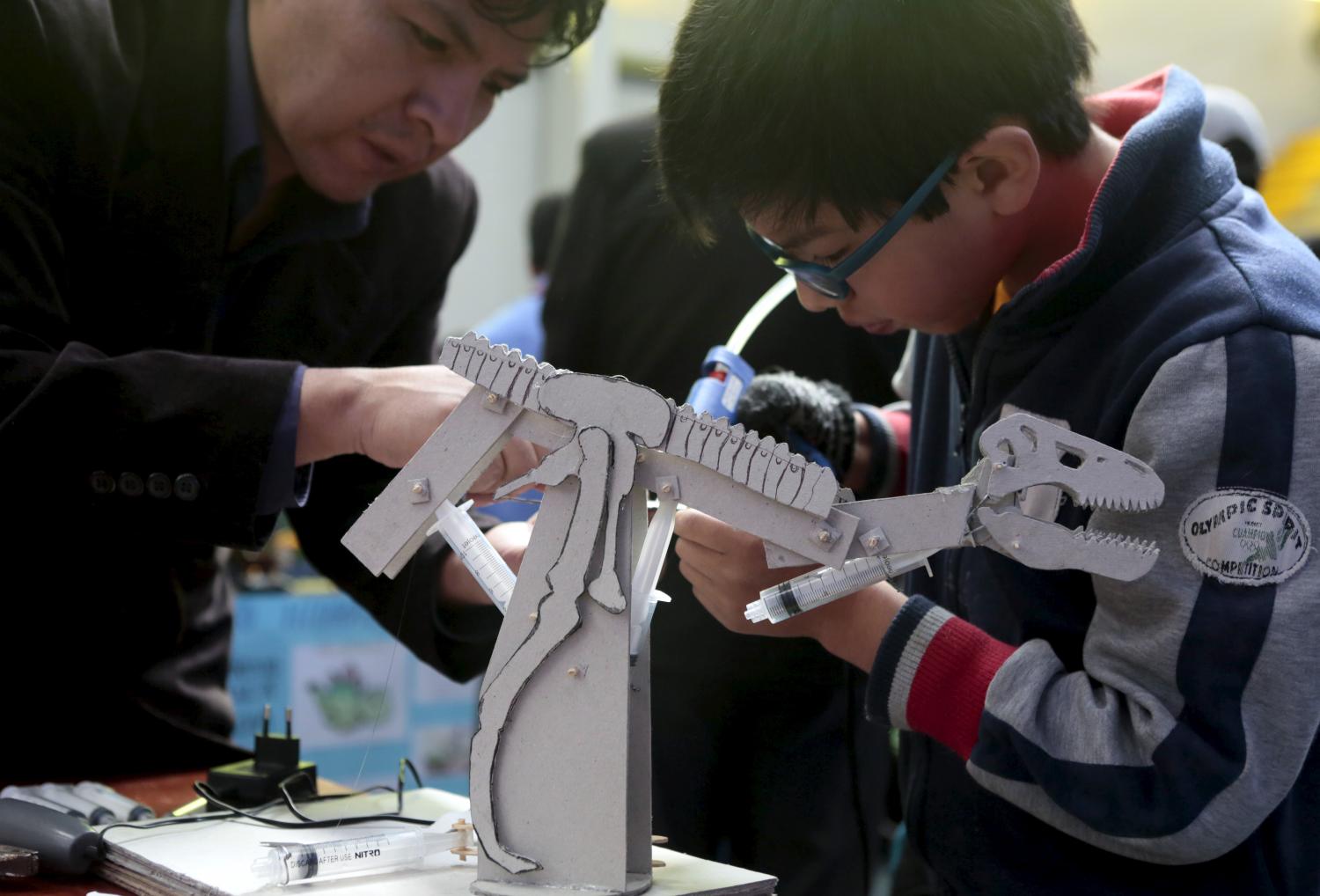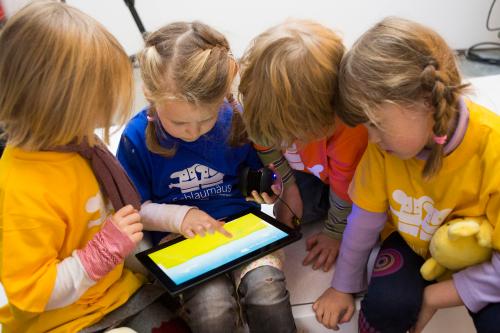At the recent United Nations General Assembly meetings in New York, we heard the International Commission on Financing Global Education Opportunity provide a sobering outlook of global education in a new report, The Learning Generation. This seminal report highlights an alarming reality: 2 billion—or half—of all current jobs are projected to disappear by 2030 due to automation. Even more worrisome is the predictions that if we continue to progress at our current pace, by 2030 half of all the youth—over 800 million young people—will not have basic secondary education level skills needed to keep up in a new economy. It is clear that globalization, advances in technology, and changing employment threaten to leave many behind.
It is clear that globalization, advances in technology, and changing employment threaten to leave many behind.
The report, which was presided over by some of the world’s top thought leaders, is a wakeup call for the global community on the critical nature of the education challenge around the globe. It also provides a much needed path forward, articulating an ambitious call to action that includes major shifts in how we use educational resources as well as for a serious scale up of investment from both developing countries and the international community. Ultimately, the report argues that it is possible to create a learning generation, where all children and youth have the skills needed to thrive in the 21st century. Indeed, this would, the report argues, be the “largest expansion of educational opportunity in history.” While the focus of the commission is on low- and-middle-income countries, many of the issues raised are consistent across the globe.
The commission puts forward a series of clear action steps to achieve this goal. Key findings from the report outline strengthening performance by allocating resources more efficiently and learning from results-driven systems. It also proposes that education ecosystems capitalize on creative approaches and improved types of financing mechanisms. And finally, it recommends that leaders prioritize inclusion to reach the most disadvantaged children by investing in sectors beyond education that also play a role in learning, such as health. In short, the commission looks to four transformations in the areas of performance, innovation, finance, and inclusion to achieve the targets of Sustainable Development Goal 4.
Five top takeaways on fostering innovation
The commission makes a persuasive argument for doing something radical. Alongside many other important recommendations, it highlights the potential of innovation—an area of particular interest at the Center for Universal Education at Brookings—to transform education systems. We find five top takeaways around spurring innovation from the report, all of which should be given serious consideration. They include the role: (1) skills, (2) teachers, (3) technology, (4) non-state actors, and (5) accreditation play in supporting and delivering innovations in education.
- Skills needs are changing. The commission makes a strong case for cultivating a breadth of skills for children and youth to compete in the 21st century economy. As it stands today, already some 40 percent of employers find it difficult to recruit employees with skills like critical thinking and communication. But as the report emphasizes, cultivating a breadth of skills is largely a delivery challenge, which requires education systems to capitalize on opportunities to innovate at all levels of the ecosystem.
- Education systems must work to expand and strengthen the education workforce. The commission provides evidence for strengthening the education workforce with the rising demand of teachers. Much can be learned from the health sector here, which has helped expand access to care by diversifying the roles of health workers. Expanding the roles of teachers could enable them to become facilitators of learning rather than transmitters of content, or leverage community members to help unburden tasks. Tools such as the Stanford Mobile Inquiry-based Learning Environment platform could also play a critical role in unburdening teachers by giving them options to easily engage and simultaneously assess students while encouraging critical thinking.
- The application of technology to learning offers huge opportunities. From enhancing learning to improving data collection to driving down costs, the commission takes a strong focus in how technology functions across innovations. Examples like Can’t Wait to Learn show the massive potential of gamified tablets to reach children in conflict and help children acquire 21st century skills such as social and analytical skills. Other platforms like KA Lite offer offline versions of Khan Academy to provide content where internet access is limited.
- Partnerships with non-state actors are critical for improving educational capacity. Delivering quality education is a team effort, which requires the full participation of a diverse set of organizations. In fact, the commission provides evidence that a majority of innovations are already delivered by non-state actors. Therefore, it encourages governments to turn to the full potential of the education ecosystem to meet the challenges ahead. With appropriate regulation and effective partnerships, civil society organizations, businesses, and employers can work closely with governments and educators to play an important role in building a learning generation.
- Flexible accreditation systems are increasingly important. Ultimately, investments in alternative learning pathways like open educational resources such as massive open online courses must be supported by the entire environment to achieve results. To support the delivery of innovations, the commission affirms the need for countries, industries, and employers to broaden their approaches to skills verification. In order to match the diversity of flexible learning opportunities, “employers—individually or by sector—should be encouraged to endorse and certify pathways of online learning, including through recognition mechanisms such as badges, which signal the acquisition of skills to education institutions and employers through metadata and proof-of-work.”
Generally, our research hopes to raise questions and generate ideas to better deliver the breadth of skills to all children in the world—the skills they will need to succeed in a rapidly changing world where more likely than not the jobs they will hold have not yet been invented.
Need for non-linear progress
The Center for Universal Education has been happy to play a role in the commission’s efforts, first in our recommendations in 2015 to establish such a commission, which were taken up under Norway’s leadership at the high-level Oslo summit the same year, and then in our contributions as a research partner through a series of soon to be released background papers, including one on innovations and technology. Generally, our research hopes to raise questions and generate ideas to better deliver the breadth of skills to all children in the world—the skills they will need to succeed in a rapidly changing world where more likely than not the jobs they will hold have not yet been invented. The Learning Generation does just that, and with a more ambitious vision and voice than ever before.
Now, we are expanding our scan of education innovations across the globe. Central to our research is the question of how to achieve the rapid progress called for by the commission. In fact, we think many innovative models hold promise to help education “leapfrog.” In other words, we are interested in the potential of innovative models to jump ahead in children’s educational access to quality, relevant learning. We will look specifically at dimensions of the teaching and learning environment, the progression and recognition of learning, and catalytic tools that could be leveraged to improve learning such as technology. We see immense value in innovation, and we hope to discover conditions of education that can produce a leapfrog effect and contribute to what the commission ultimately calls for—the largest scale up in quality learning the world has ever seen.
The Brookings Institution is committed to quality, independence, and impact.
We are supported by a diverse array of funders. In line with our values and policies, each Brookings publication represents the sole views of its author(s).








Commentary
The top 5 education innovations needed to keep up in a new economy
October 4, 2016